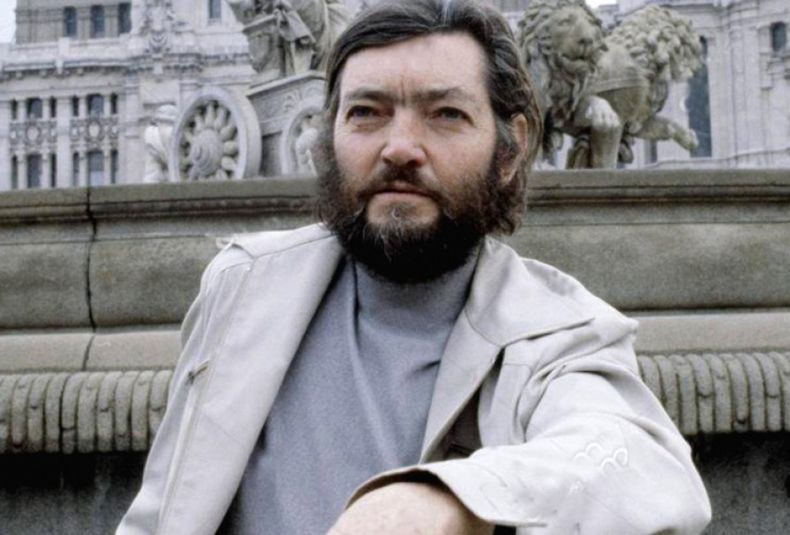Scan barcode
marointhegraph's review against another edition
emotional
hopeful
inspiring
reflective
sad
slow-paced
- Plot- or character-driven? Character
- Strong character development? Yes
- Loveable characters? It's complicated
- Diverse cast of characters? Yes
- Flaws of characters a main focus? Yes
4.75
drako1357's review against another edition
5.0
Rayuela es una novela experimental del escritor argentino Julio Cortázar, publicada en 1963. La obra es considerada una de las más importantes de la literatura latinoamericana y una de las más influyentes del siglo XX.
La novela cuenta la historia de Horacio Oliveira, un intelectual argentino que vive en París. Oliveira conoce a la Maga, una mujer misteriosa y sensual, y ambos se embarcan en una relación amorosa turbulenta. La novela explora temas como el amor, la pérdida, la creación artística y la búsqueda de la libertad.
Rayuela es una obra innovadora en términos formales y narrativos. Cortázar rompe con la tradición de la novela lineal y propone al lector dos formas posibles de leer la obra: una lectura lineal, que sigue la historia de Oliveira, y una lectura fragmentaria, que permite al lector elegir los capítulos que desea leer.
El tema principal de Rayuela es la creación artística. Cortázar explora la relación entre el arte y la vida, y propone que la literatura es una forma de transformar la realidad. La novela también refleja la búsqueda de la libertad, tanto individual como colectiva. Oliveira es un personaje que busca liberarse de las convenciones sociales y de las limitaciones de la realidad.
Rayuela es una obra compleja y desafiante, pero también es una obra bella y conmovedora. Es una novela que ha influido a generaciones de lectores y escritores, y que sigue siendo una obra relevante en la actualidad.
La novela cuenta la historia de Horacio Oliveira, un intelectual argentino que vive en París. Oliveira conoce a la Maga, una mujer misteriosa y sensual, y ambos se embarcan en una relación amorosa turbulenta. La novela explora temas como el amor, la pérdida, la creación artística y la búsqueda de la libertad.
Rayuela es una obra innovadora en términos formales y narrativos. Cortázar rompe con la tradición de la novela lineal y propone al lector dos formas posibles de leer la obra: una lectura lineal, que sigue la historia de Oliveira, y una lectura fragmentaria, que permite al lector elegir los capítulos que desea leer.
El tema principal de Rayuela es la creación artística. Cortázar explora la relación entre el arte y la vida, y propone que la literatura es una forma de transformar la realidad. La novela también refleja la búsqueda de la libertad, tanto individual como colectiva. Oliveira es un personaje que busca liberarse de las convenciones sociales y de las limitaciones de la realidad.
Rayuela es una obra compleja y desafiante, pero también es una obra bella y conmovedora. Es una novela que ha influido a generaciones de lectores y escritores, y que sigue siendo una obra relevante en la actualidad.
sleerash's review against another edition
1.0
No me gusta dejar un libro a medias. Sé que es un escrúpulo tonto, pero bueno, me lo voy quitando poco a poco.
Rayuela tiene esa aura de los libros considerados como de culto. Rompedores en su día, revolucionarios de la literatura, etcétera. Pues lo siento mucho, pero, salvo pasajes concretos, me ha parecido farragosa, lenta y, lo peor de todo, aburrida. Una boutade, siguiendo la francofilia del autor.
Quizá retome la lectura más adelante. O quizá no, qué demonios. Hay mucho por leer.
Rayuela tiene esa aura de los libros considerados como de culto. Rompedores en su día, revolucionarios de la literatura, etcétera. Pues lo siento mucho, pero, salvo pasajes concretos, me ha parecido farragosa, lenta y, lo peor de todo, aburrida. Una boutade, siguiendo la francofilia del autor.
Quizá retome la lectura más adelante. O quizá no, qué demonios. Hay mucho por leer.
coolbritanja's review against another edition
2.0
The first half of the book was okay. I couldn't decide whether I liked it but it was perhaps a bit too deep for me or whether it was just a bit pretentious. And then I just got bored. Just didn't get it...
nataliammelisa's review against another edition
challenging
dark
emotional
reflective
tense
slow-paced
- Plot- or character-driven? Character
- Strong character development? No
- Loveable characters? No
- Diverse cast of characters? It's complicated
- Flaws of characters a main focus? Yes
4.0
glenncolerussell's review against another edition

Julio Cortázar's 1963 novel, Hopscotch, encapsulates much of the spirit found in his 1962 work, Cronopios and Famas. Indeed, it feels as though those freedom-loving, game-playing, frolicking Cronopios have transformed themselves into the very blood cells coursing through the veins and arteries of main character, Horacio Oliveira. He comprehends that life is a game to be enjoyed, rather than an unending drudgery to be endured. Keep it up, Oliveira! Don't let any dull, uptight Famas hold you down. Maintain those Cronopios blood cells in optimal condition by consistently infusing life with renewed freshness.
The language sizzles, crackles, sparkles, and dances the tango as a reader hops from chapter to chapter via Julio's Table of Instructions or reads in the normal fashion ending with chapter 56 (also per the instructions), or continues to read to the last page at the end of chapter 155, or any other hopscotching way you would like. However, one thing is constant: Oliveira constantly proves himself a true Cronopio, when he proclaims, one of many such proclamations, "I realized that searching was my symbol, the emblem of those who go out at night with nothing in mind, the motives of a destroyer of compasses."
Hopscotch weighs in at 564-pages, brilliantly translated by the great Gregory Rabassa and features a plot set first in Paris and then in Buenos Aires. Yet, how central is plot? After all, La Maga tells Horacio, “You think that you're in this room, but you're not. You're looking at the room, you're not in the room.” This not-being-all-there hearkens back to Julio (so much like Horacio) starting out as a child carrying an adult inside and then, with age, an adult carrying a child inside. Doing the Julio-flip! In Julio's own words taken from his Around the Day in Eighty Worlds:
“I will always be a child in many ways, but one of those children who from the beginning carries within him an adult, so when the little monster becomes an adult he carries in turn a child inside and, nel mezzo del camino, yields to the seldom peaceful coexistence of at least two outlooks onto the world. Much of what I have written falls into the category of eccentricity, because I have never admitted a clear distinction between living and writing; if in my life I have managed to disguise an only partial participation in my circumstances. I still cannot deny that eccentricity in what I write, since I write precisely because I am only half there or not there at all.”
By my reading of Hopscotch, we are well to keep Julio's not-half-or-not-all-there-at-all in mind when hopscotching on characters and themes when reading either in the conventional page after page way or turning back and forth through pages using our own or Julio's sequence. Sure, there's order vs. chaos and Oliveira vs. society and Oliveira vs. the outside world; however, by my judgement, the ultimate lens of this vs. that is the world of Cronopios vs. the world of Famas, that is, the otherworldly world of lit, art and imagination vs. the all-here world of rigidity, conformity and the drab ho-hum.
My somewhat reckless rec: read Hopscotch like a Cronopio.

Now that it's 2023, here's how I picture beautiful La Maga

Julio Cortázar, 1914-1984
dkehrer's review against another edition
challenging
dark
emotional
mysterious
reflective
sad
slow-paced
- Plot- or character-driven? Character
- Strong character development? Yes
- Loveable characters? It's complicated
- Diverse cast of characters? Yes
- Flaws of characters a main focus? Yes
4.5
colofj's review against another edition
3.0
Had I read this in college, I would’ve loved it. For enjoyment, it felt like more of a confused slog.